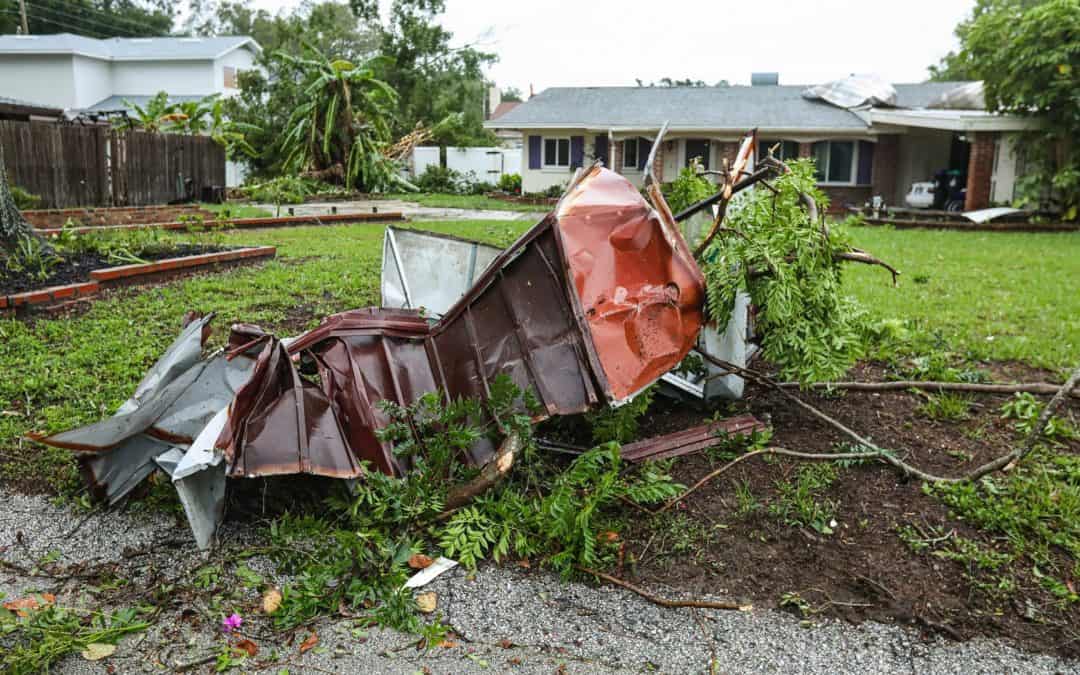Wind, hail, rain, ice and other types of storms have the capacity to damage your roof in different ways. During rain storms for example, the water could pool in a flat area creating or worsening existent leaks. In addition to this, the roof could cave in from the weight of the pooled water causing damage to the ceiling, the walls and the property in the house. Wind storms on the other hand could either blow off sections of the roof or carry and deposit harmful debris. The roof could also cave under the weight of hail and ice either during or after hail and ice storms. Fully understanding storm damage possibilities could help you prepare financially, technically and psychologically.
Signs of storm damage
After every storm, it is advisable to check your roof for possible damage. Well, first, you must understand that your safety is of utmost importance and therefore climbing on the roof may not always be the best course of action. However, you may look out for visible damage from the ground. In St. Louis his may include missing shingles; clogged gutters; ice dams; damaged roof supports; visible granule loss; broken or missing tiles; damaged chimneys; visible water infiltration; exposed nails; dents on the roof and a large pile of granules towards the end of the downspout.
The storm damage roofing checklist
Different roofing contractors have developed checklists that their clients could use to assess the amount and extent of damage to the roof after a storm. These checklists are usually available on their websites and can be downloaded for free. If you are not conversant with the signs of storm damage or have little to no knowledge on roofing matters, such checklists are a good starting point. Besides, you may download several checklists form various contractors and compare the results before you can engage a professional roofer or roofing contractor.
Scheduling a roof inspection
It is good to note that the absence of visible damage to a roof after a storm does not always imply the lack of damage and therefore scheduling a professional roof inspection is advisable. This is especially true after a high intensity storm or one that lasted several days or weeks. The professional roofer will carry out a detailed inspection of the roof and highlight areas that require repair services. They will also offer their professional opinion on what the repair services will entail and how much it is likely to cost. Subsequently, you should acquire the materials required and commission professional repairs.
Hire the right roofing professionals
After a massive storm in an area, there might be a shortage of roofing professionals owing to the high demand. This shortage could result in dubious contractors taking advantage of people who may be in dire need of repair or roof replacement services. To this end, you should be wary of working with unlicensed and unrecognized roofing contractors since you may not be at position to verify their proclaimed skills and experience. Dubious contractors are likely to lure you with high discounts and their deals will sound too good to pass. This usually leads to an oversight with respect to their professional papers and licensing and ultimately, it may end in disappointments.
Ensure that you reach out to roofing contractors in your area as soon as possible to book your appointment. Once the professional shows up, ensure that you carefully check their identification and licenses to confirm that you are working with legitimate employees. This is not only important for your safety but it also ensures that your insurance claim cannot be invalidated on the basis that a dubious roofing expert increased the damage to the roof. If you have lived in the area for a while, it is better to work with contractors you have dealt with before as these are less likely to con you.
Filing your insurance claim
The extent of the storm damage determines whether or not you will file an insurance claim with your homeowner’s insurance provider. Such claims are lodged where significant damage is identified and therefore expensive repairs or roof replacement becomes necessary. The beauty of working with a professional roofer to assess the storm damage is that you get a professional basis for your claim accompanied by photographic evidence. While lodging your claim, it is important to be truthful and objective in your assessment as it is norm for the insurer to send their technical expert to assess the damage before the claim can be processed. Any claim that is suspected of aiming at defrauding the insurance company-such as an exaggerated claim- may be thrown out even in cases where the damage to the roof was real.

Recent Comments